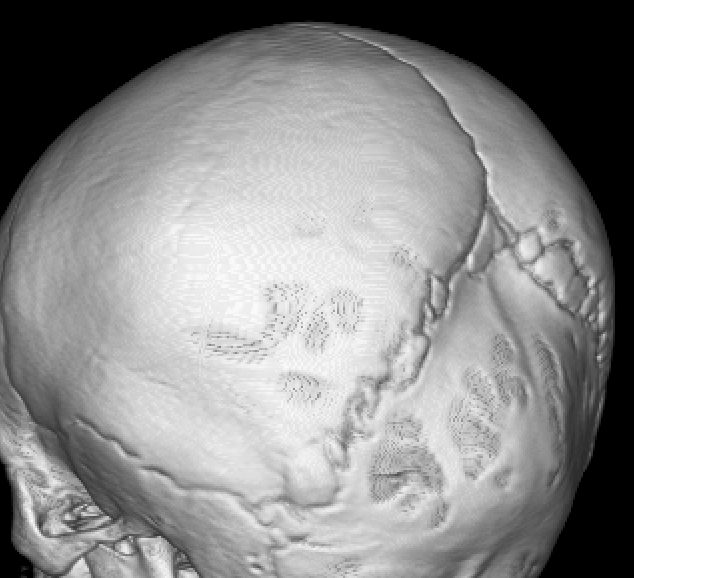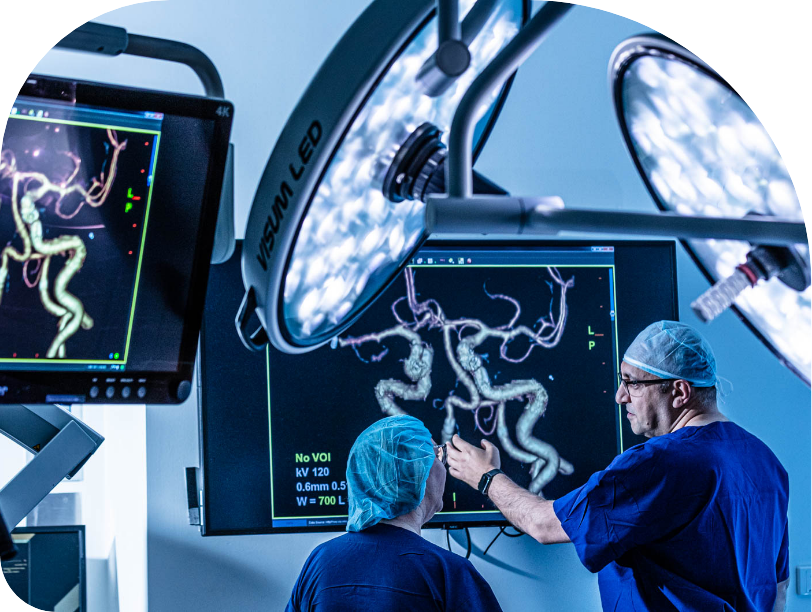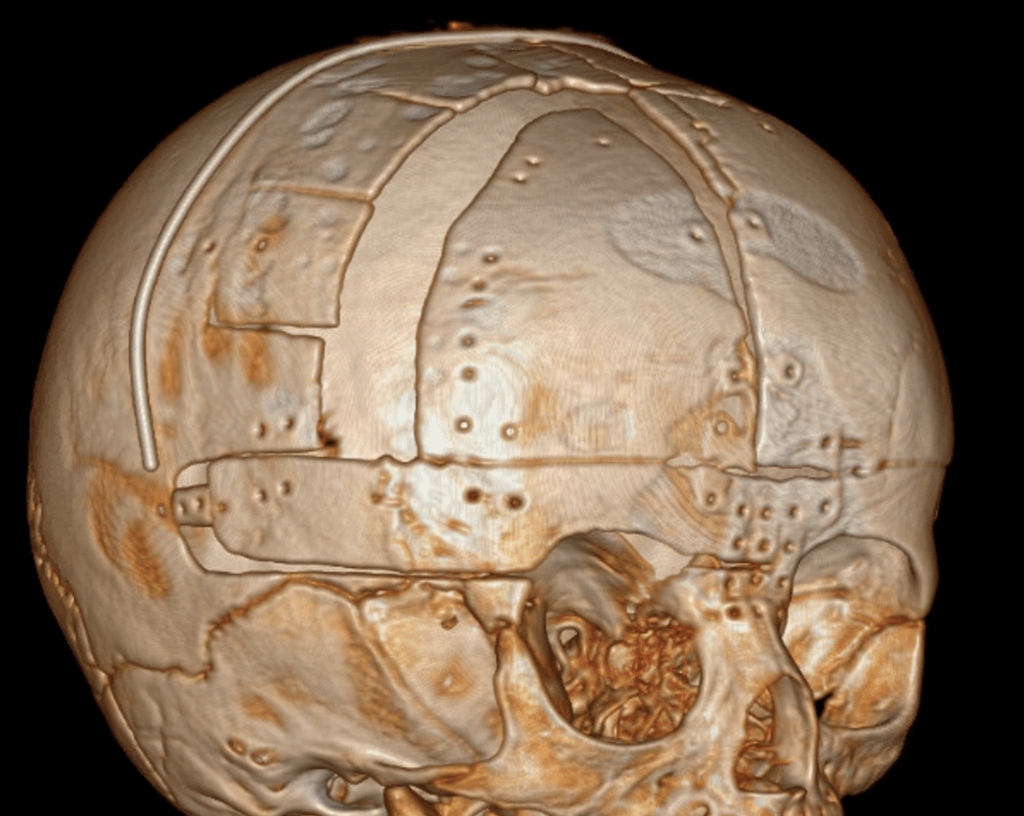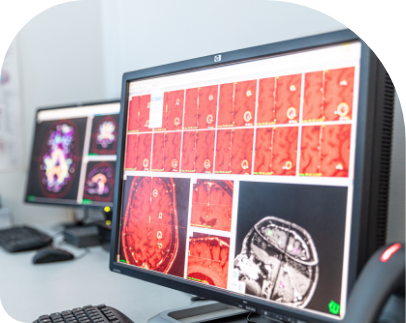Positional Plagiocephaly and Craniosynostosis

Positional Plagiocephaly
Plagiocephaly is also commonly referred to as “flat head syndrome”. It frequently occurs in babies, where a flat area appears on one side of their head causing an asymmetry of the head shape.
To accommodate for brain, skull and head growth, babies have open cranial sutures and soft spots, called fontanelle. This makes the babies’ skull flexible and malleable. Therefore, a baby’s soft skull can flatten from prolonged pressure in one position. Positional Plagiocephaly occurs when all sutures and fontanelles remain open and does not affect brain development.
Parents can often prevent or treat it with activities like supervised tummy time and by varying the baby’s position during sleep and play. Another common reason for positional plagiocephaly is torticollis, where neck movement is restricted or fixated to certain positions.
Treatment often includes allied health specialists including physiotherapy. In severe cases helmet therapy may also be beneficial.
Craniosynostosis
Plagiocephaly may also be a result of Craniosynostosis, which is a condition where one or more cranial sutures, which are soft, fibrous joints between a baby’s skull bones, close too early (premature) and become rigid. This premature cranial suture fusion causes an asymmetric skull shape but may also create pressure inside the head as the brain continues to grow. Symptoms include an abnormally shaped head, raised palpable ridges along the sutures, and sometimes developmental delays.

Elements of Craniosynostosis?
Sutures:
A baby’s skull has multiple joints, or sutures, which are typically flexible to allow for brain growth and passage through the birth canal.
Premature closure:
In craniosynostosis, these sutures fuse and become rigid too early.
Skull shape:
As a result the skull grows in an abnormal shape to compensate for the closed suture. Skull appearances may be long, narrow, wide, or uneven.
Types of craniosynostosis
Non-syndromic:
In most cases, the craniosynostosis is sporadic without association to a specific syndrome and the exact cause remains unknown. This type doesn’t involve other traits or conditions.
Syndromic:
This type is often linked to a specific genetic mutation and occurs in the context of a syndrome, which may also affect other body parts, such as the fingers, midface, or other organs. Multidisciplinary cranio-facial team assessment and further investigations may be necessary and recommended, including but not limited to neurosurgery, plastic surgery, neurology, ophthalmology, ENT, geneticist, dentists and allied health.
Single suture craniosynostosis:
Single suture craniosynostosis refers to only one suture being involved and is the most frequent type, which usually occurs sporadically.
Multiple suture craniosynostosis:
This type refers to a condition where more than one suture is affected and often develops either as part of a syndrome or as a secondary craniosynostosis. Multidisciplinary cranio-facial team assessment and further investigations may be necessary and recommended, including but not limited to neurosurgery, plastic surgery, neurology, ophthalmology, ENT, geneticist, dentists and allied health.
Primary craniosynostosis:
In primary craniosynostosis the underlying problem affects an abnormal biology of the suture itself causing premature suture closure. Primary craniosynostosis can be isolated or as part of a syndrome.
Secondary craniosynostosis
In secondary craniosynostosis the suture biology is normal, but abnormal external forces result in premature suture closure. Exogenous factors may include endocrine, or metabolic pathologies, medications or over-shunted patients.

Symptoms
Symptoms may include the following but are not limited to:
- An unusually shaped head, which may be long and narrow, wider than usual, or uneven.
- A raised ridge or bump along the closed suture.
- A bulging fontanelle (soft spot).
- Lethargy, irritability, difficulties with sleep or feeding.
- developmental delays.

Treatment
Treatment especially in multiple craniosynostosis may prevent high pressure inside the skull that can lead to developmental delay and other neurological deficits. For single craniosynostosis treatment is often but not always for cosmetic reasons. Surgical intervention can help create room for the brain to grow and correct the head shape.
Various surgical treatments exist including minimal-invasive endoscopic procedures earlier in life to more invasive operations like total cranial vault remodelling for older children.
Please contact us if you require any further imformation or for booking a consultation with A/Prof Eibach via admin@mqneurosurgery.com or 02 9812 3900
